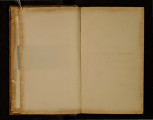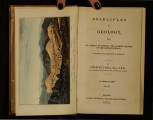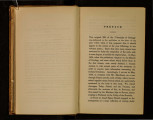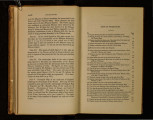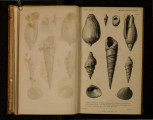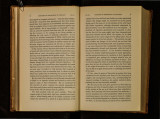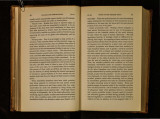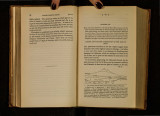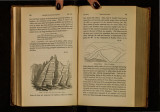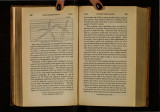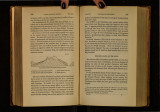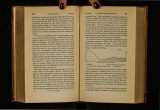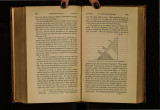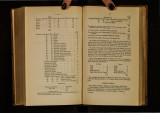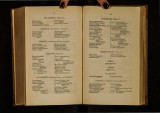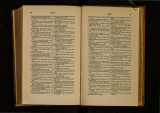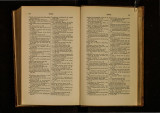| OCR Text |
Show 124 NEWER PLIOCENE PERIOD. [Ch.X. or trap dikes are as regular in shape as those of Somma. The solution, therefore, of this problem, in reference to the modern dikes, is most interesting, as being of very general application in geology. Varieties in theit texture.-1-Iaving explained the origin of the parallelism of the sides of a dik~, we have next to consider the difference of its texture at the edges and in the middle. Towards the centre, observes M. Necker, the rock is coarset· grained, the component elements being in a far more crystalline state, while at the edge the lava is sometimes vitreous and always finer grained. A thin parting band, approaching in its character to pitchstone, occasionally intervenes on the contact of the vertical dike and intersected beds. M. Necker mentions one of these at the place called Primo 1\lonte, in the Atrio del Cavallo; I saw three or four others in different parts of the great escarpment. These phenomena are in perfect harmony with the results of the experiments of Sir James Hall and Mr. Gregory Watt, which have shown that a glassy texture is the effect of sudden cooling, and that, on the contrary, a crystalline grain is produced where fused minerals are allowed to consolidate slowly and tranquilly under high pressure. It is evident that the central portion of the lava in a fissure would, during consolidation, part with its heat more slowly than the sides, although the contrast of circumstances would not be so great as when we compare the lava at the bottom and at the surface of a current flowing in the open air. In this case the uppermost part, where it has been in. contact with the atmosphere, and where refrigeration has been most rapid, is always found to consist of scoriform, vitreous, and porous lava, while at a greater depth the mass assumes a more lithoidal structure, and then becomes more and more stony as we descend, until at length we are able to recognize with a magnifying glass the simple minerals of which the rock is composed. On penetrating still deeper, we can detect the constituent parts by the naked eye, and in the Vesuvian currents distinct crystals of augite and leucite become apparent. Ch.X.] MINOR CONES OF CAMPANIA. 125 '~h.e same phenomenon, obset·ves M. Necker, may readily be exhibited o~ a smaller scale, if we detach a piece of liquid Java from a movmg current. The fragment cools instantly, and we find the surface covered with a vitreous coat, while the interior, although extremely fine oO 'l'ained ' ha' s a more st ony appearance • . It must, h?.wever, be observed, that although the lateral por-tw. ns of the d. ikes are finer grained than the c en t ra1 , yet t 11 e vitreous partmg layer before alluded to is extremely rare. This may, perhaps, be accounted for, as the above-mentioned author sugge. sts, by the great. heat which the walls of a fissure m~ acqmre before the flmd mass begins to consolidate, in which case the lava, even at the sides, would cool very slowly. Some fissures, also, may be filled from above·' and I'n th'I S case t 11 e refrigeration at the sides would be more rapid than when the ~nelted matter flowed upwards from the volcanic foci, ]n an mtensely-heated state. The rock composing the dikes of Somma is far more com-p. act than that of ordinary lava' for the column of mel te d matter m a fissure greatly exceeds an ordinary stre'a m of 1a va m. we1. g I1 t and the great pressure checks the expansion of those O'a ' h . 1 · · 0 ses w IC 1 giVe nse to vesicles in Java. . ~'he:e is a .tendency in almost all the V esuvian dikes to divi1d' e mto horizontal prisms' which are at ri g I1 t ang1 c s to t h e coo :ng surfac.es *, a phenomenon in accordance with the for-maMtio'n of vertical columns in horizontal beds of 1a va. . mor cones of the Phlegrcean Fields · -In the v o l cam. e d'I S-triCt of N apl~s there are a great num her of conical hills witl craters on their summits, which have evidently been produce~ by one ~r more explosions, like that which threw up the Mont .N uovo m 15.3 8 . Tll ey m.e composed of trachytic tuff, whiche ~s loose an.d mcoherent, both in the hills and, to ~ certain de th In the plams around their base but I . I . . d p ' It is suo·()' , d b ' w uc 1 Is m urated below. · boe:ste . y Mr. Scrope ' that thi's di'ffie rence may b e owm. g to the circumstance f tl 1 . 1 ° le vo came vents havinO' burst out m as lallow sea as was tl . tl tl . , . . . ' le case With Monte N uovo where 1etc Is a sirndar foundation of hard tuff, under a cove' ring of * See wood-cut N 0, 25. |




